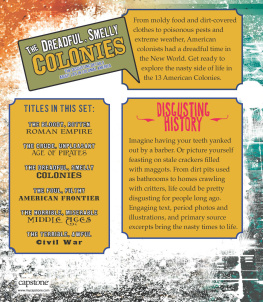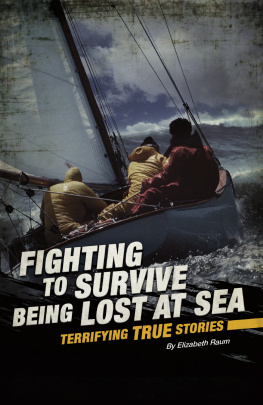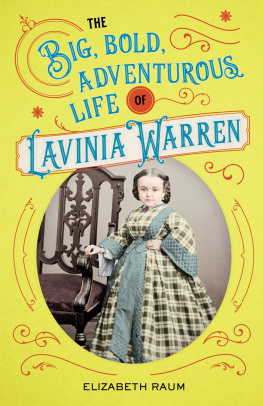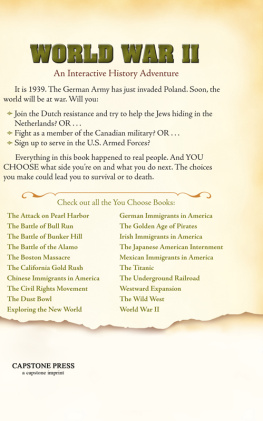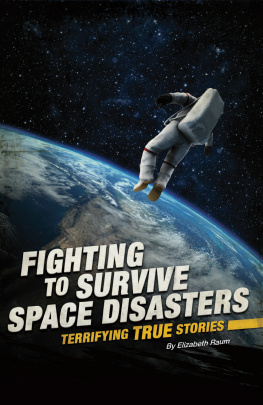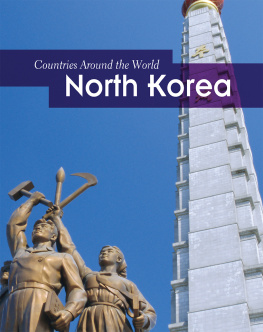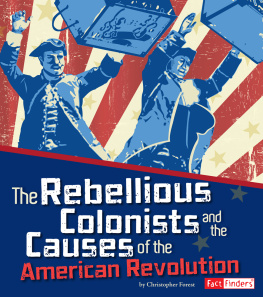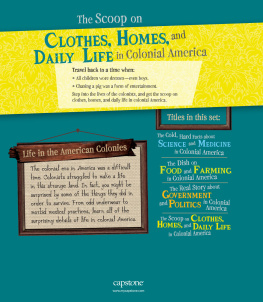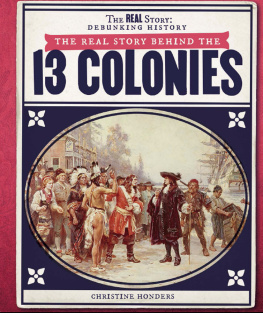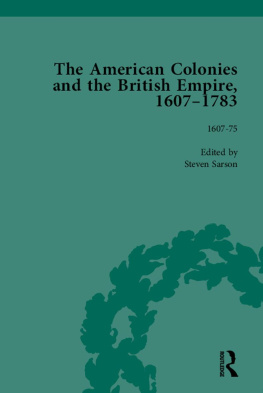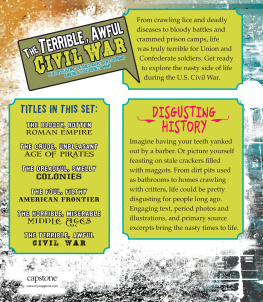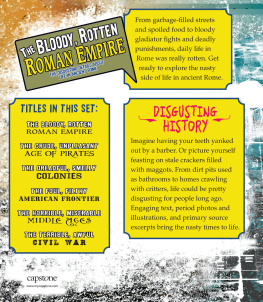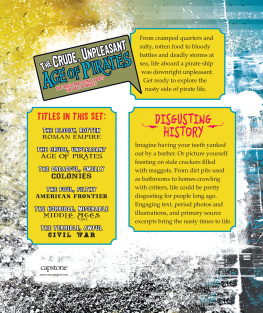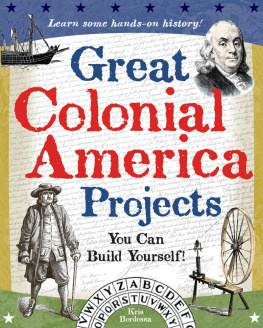The 13 American Colonies
(16071776)
- 1585 First English colony formed at Roanoke Island; it is deserted sometime before 1600.
- 1607 Jamestown and Sagadahoc established; Sagadahoc settlement fails.
- 1619 Twenty Africans arrive at Jamestown on a Dutch ship to be sold as servants.
- 1620 About 100 colonists arrive on the Mayflower to form Plymouth Colony in Massachusetts.
WILLIAM BRADFORD ON THE MAYFLOWERS ARRIVAL IN 1620
The whole country, full of woods and thickets, represented a wild and savage hue.
From Of Plymouth Plantation, 1620-1647
FIRST THANKSGIVING
In 1621, Plymouth colonists and Wampanoag Indians gather for a harvest feast that lasts three days. The gathering later becomes known as the first Thanksgiving.
- 1630 John Winthrop arrives in Massachusetts with 900 Puritans to form Massachusetts Bay Colony with Boston as its headquarters.
- 1664 Maryland passes a law requiring lifelong slavery for Africans brought to the colonies as servants.
- 1675-1676 King Phillips War between colonists and American Indians in New England results in the deaths of 600 English colonists and 3,000 American Indians.
- 1692 Witch trials take place ir Salem, Massachusetts.
- 1754 French and Indian War begins when French troops arrive in Ohio Valley to build forts. War lasts until 1763.
- 1760s England imposes several taxes on colonists to help pay for the French and Indian War; colonists begin to rebel.
- 1770 British soldiers fire into a crowd in Boston killing five men. This conflict is called the Boston Massacre.
- 1776 America declares independence from Great Britain.
DECLARATION OF INDEPENDENCE
In 1776, colonial leaders adopt the Declaration of Independence. This document declares the colonies independence from Great Britain.
THE COLONISTS
Most settlers came to the 13 colonies from England and other parts of Europe. Many colonists came to America in search of political and religious freedoms.
ESTIMATED POPULATION OF COLONISTS IN AMERICA
| NUMBER OF COLONISTS | LARGEST CITY |
|---|
| 1587 | 120 | None |
| 1617 | 4,000 | None |
| 1650 | 50,400 | Boston 2,000 |
| 1700s | 275,000 | Boston 7,000 |
| 1720s | 475,000 | Boston 12,000 |
| 1760s | 1,500,000 | Philadelphia 19,000 |
| 1770s | 2,210,000 | Philadelphia 28,000 |
New Land, New Home
In the 1600s, homes were waiting for them. So they needed to find shelter fast.
In the southern colonies, the first colonists lived in tents made of sailcloth. They complained bitterly of the bugs. Mosquitoes feasted on the new arrivals.
Other colonists built small . They tied poles together and covered them with bark and tree branches to keep out the winters cold. A fire added light, heat, and blinding smoke. In winter, families huddled on the straw floor beneath furs and blankets.
When colonists arrived in America, they had to clear land and build shelters.
FOUL FACT
In 1610, 175 new settlers arrived at Jamestown, Virginia. They found only 60 of the first 500 colonists alive. Disease and starvation had killed the rest.
Some settlers in Massachusetts, New York, and Pennsylvania dug cavelike homes. They lined dirt walls with sticks to prevent the home from collapsing. One wall contained a small door. Bugs skittered in through the tree-branch roof and dropped onto sleepers. Mice, rats, and snakes slithered through the sod.
The first wooden houses were only about 20 feet (6 meters) wide by 20 feet (6 meters) long. Shutters over the windows kept out the wind, but they also kept out the light. A fire burned constantly to provide light and heat. Everyone ate, worked, and slept in just one room. A lucky family might have a table and one or two chairs. Children stood while they ate their meals. They slept on the floor on mattresses stuffed with rags, cornhusks, or bits of leftover wool. Houses smelled of smoke, stew, and sweaty bodies.
Small shelters offered little protection from the harsh new land.
Disease and Death
March 24, 1621 Plymouth Colony
This month thirteen of our number died. During the last three months, half of those in our colony have perished. Most died from lack of housing. Some suffered from
Above quotation is based on the writing of Thomas Prince, as published in The Annals of New England, 1726.
Hardtack, Anyone?
Picky eaters didnt last long in the colonies. At first, colonists ate what they brought with them on the ship. They ate dried peas that had to be soaked in water for hours and then boiled. For meat, they had salted pork or beef. When meat became moldy and rotten, colonists scraped away the mold and ate what was left. Their only bread was hardtack, a rock-hard cracker made of flour and water. Beetles called weevils burrowed into the hardtack, which made it easier to eat.
HARDTACK
After these supplies ran out, most colonies suffered through a .
In time, colonists learned to grow corn. But corn made for a boring diet. In many homes, colonists ate cornmeal mush or porridge for both breakfast and supper. The biggest meal was often a stew of beans, corn, and other vegetables. On a good day, the stew might include raccoon or deer meat. Yum!
When crops were good, colonists had plenty of food to eat.
No Privacy in the Privy
Imagine the nice, comfy bathroom you use every day. Now picture a rough tree, dirty pit, or smelly outhouse. Pretty gross, right? But thats what colonists used for bathrooms.
At first, colonists stepped behind a tree or a bush when they needed to go. But as towns grew and people lived closer together, they needed another solution.
Colonists dug pits downhill from their homes and built outhouses or privies over the pit. A board with a hole in the middle formed the seat. Waste fell into the pit. When the pit was full, colonists dug a new pit and moved the outhouse.

